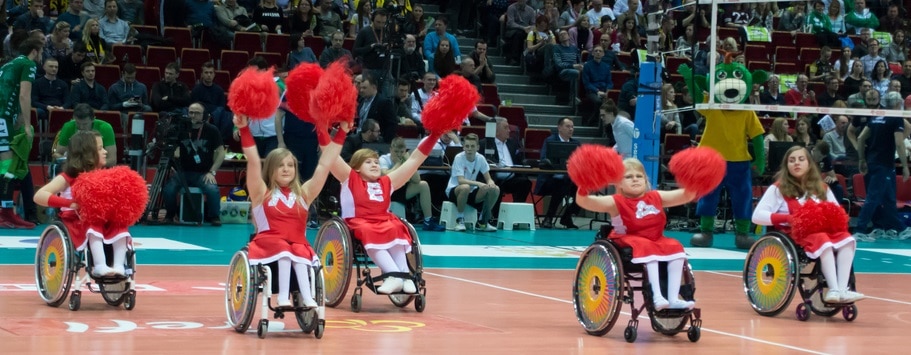“Step,” a new documentary that won accolades at the 2017 Sundance Film Festival and opened earlier this month in theaters across the nation tells the inspiring story of an inner city high school’s girls Step team that overcomes significant obstacles to win their state’s step dance championship. The skills they learn through their team membership help to prepare them for their school’s ultimate goal: To ensure that every member of the team is accepted to college. The film got us thinking: What’s available to girls (and boys) with disabilities in the realm of competitive dance and cheerleading? As it turns out, there’s a lot out there!
In fact, about a week ago, U.S.A. Today reported on a special needs cheerleading squad in Salisbury, Maryland that’s become one of the state’s most successful teams. The “Shooting Stars” is made up of athletes with disabilities ages 7-53. And its team leaders say, all it takes to join the team “is a positive attitude.”
Then there’s this: In partnership with the International Cheer Union, ParaCheer International is currently developing a “new division” of cheerleading for athletes with and without disabilities who cheer together. According to Paracheer’s website, the division “will involve mixed teams of disabled and non-disabled athletes, working together to create a routine that incorporates most of the elements of a current cheerleading routine – jumps, dance, stunts and tumbling ….”
Recently, a hip hop dance team from Fort Myers that includes members who are blind, and have Down’s syndrome was invited to participate in an international dance competition. Team leader, Trish Colecki’s motto? “We may be disabled but we aren’t unable.”
And dance and cheerleading teams aren’t just for kids. Take the L.A.-based Rollettes. Founded by Chelsie Hill, a competitive dancer who lost use of her lower body due to a car accident, the group of six women who all use wheelchairs, dance at festivals for people with varied abilities across the country. Recently, Hill told Today.com, “Of course there are things I miss being able to feel — leaps and kicks and backflips. But when I’m performing, I still feel the same rush that I used to. And when I go on stage, I don’t feel my chair. I don’t feel different. I’m just dancing, and that’s where my heart is.”
But you don’t have to live in Maryland, Florida or California to learn to cheerlead. A nonprofit called The Sparkle Effect teaches communities all over the country how to create cheerleading squads for people with disabilities. The Sparkle Effect began when Sarah Cronk, a 15-year-old high school cheerleader with a brother who is developmentally disabled, was inspired to create an inclusive cheerleading squad—The Sparkles— at her school in Bettendorf, Iowa. Cronk had seen how her brother suffered when he was excluded by classmates, and she was determined to create a vehicle that would bring differently abled students together.
What started as one team in 2008, has grown into an organization that has helped launch 200 cheerleading teams in 30 states and has impacted the lives of more than 10,000 students with and without disabilities.
In 2016, Cronk told People Magazine, “Ultimately, I want to run The Sparkle Effect out of business. I know that sounds crazy, but I want us as a nation to get to a point where inclusion is the norm and not the exception,” says Cronk. “I want us to arrive at a place where we don’t need organizations like The Sparkle Effect because inclusion is just the natural set point for schools nationwide.”
Cheers!


